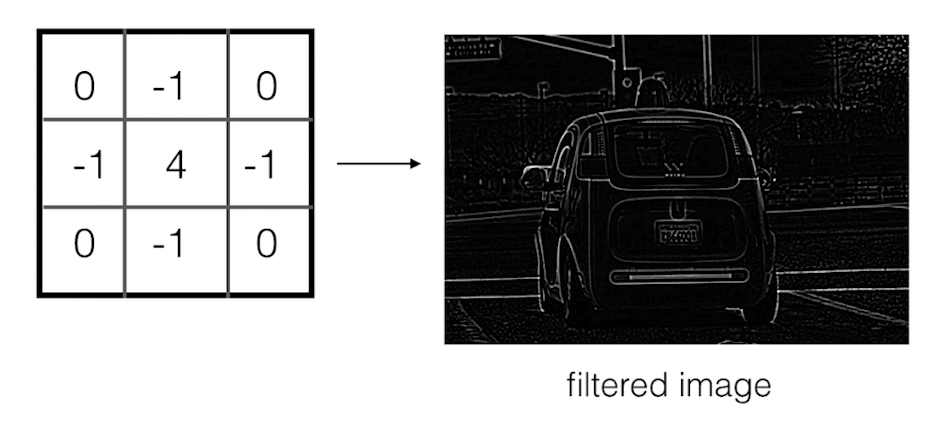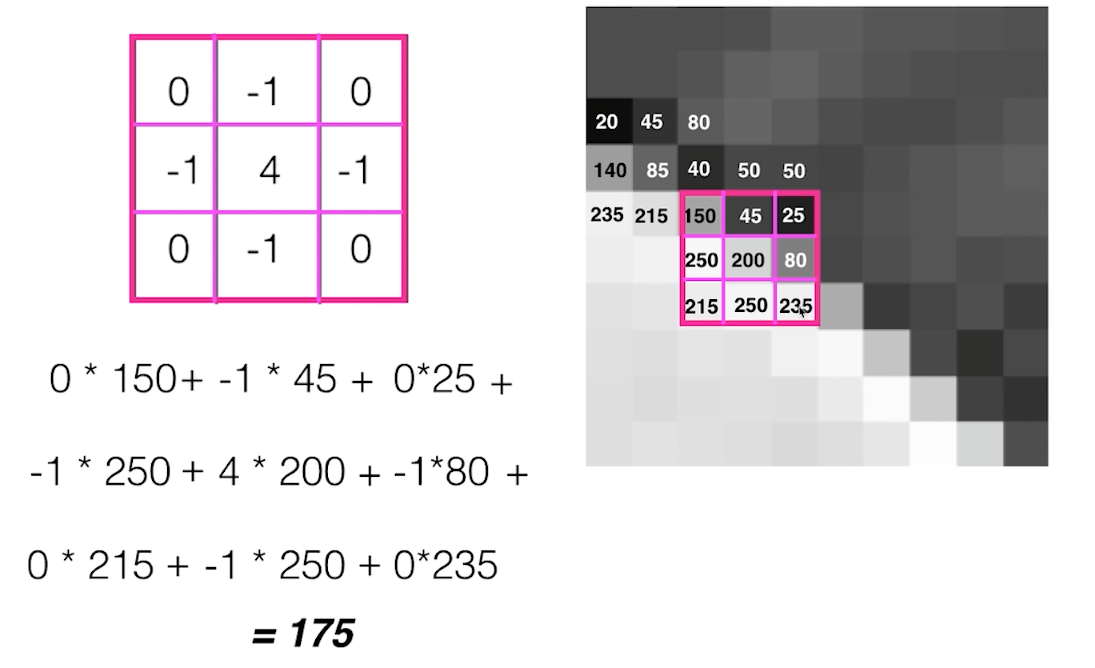40. High-pass Filter
High Pass Filters
High-pass Filters
High-pass filters detect big changes in intensity over a small area, and patterns of intensity can be best seen in a grayscale image.

Grayscale car.
The filters I’ll be talking about are in the form of matrices, often called convolution kernels, which are just grids of numbers that modify an image. Here is a resource if you'd like to see a wider variety of kernel types in action. Below is an example of a high-pass kernel that does edge detection. It’s a 3x3 kernel, whose elements all sum to zero.
It’s important that, for edge detection, all of the elements sum to 0 because edge filters compute the difference or change between neighboring pixels; they are an approximation for the derivative of an image over space.

High-pass kernel.
Convolution
During kernel convolution, the 3x3 kernel is slid over every pixel in the original, grayscale image. The weights in the kernel are multiplied pair-wise around a center pixel, and then added up. This sum becomes the value of a pixel in a new, filtered, output image.
This operation is at the center of convolutional neural networks, which use multiple kernels to extract shape-based features and identify patterns that can accurately classify sets of images. These neural networks are trained on large sets of labelled data, and they learn the most effective kernel weights; the weights that help characterize each image correctly.

Calculating one output pixel value (175) while performing convolution.
To handle the edges of images, where the filter cannot exactly overlap, a variety of techniques are used. One of the most common is to extend the edge pixel values of the image out by one and use that to perform a convolution. Another is to pad the image with zeroes, though this creates a darker border in the resulting, filtered image.